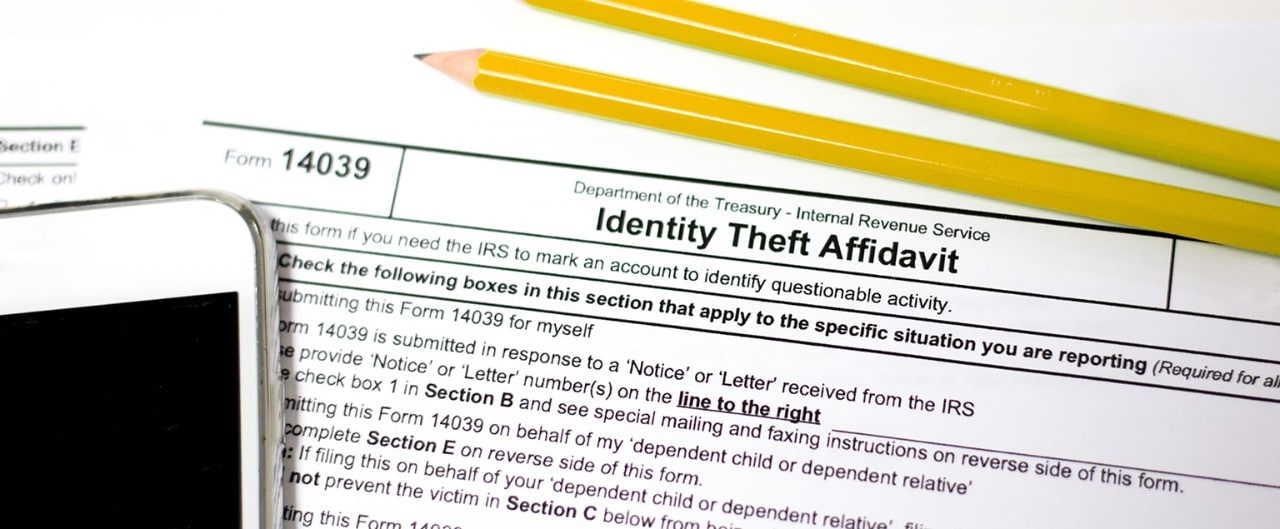- Not insured by the FDIC or any other government agency
- Not bank guaranteed
- Not a deposit or obligation
- May lose value


Tax identity fraud is a form of identity theft in which a thief uses someone else’s personal information to file a fraudulent tax return and get a refund. Many people don’t realize this type of fraud has happened until they file their taxes and learn someone else has already filed under their name.
Tax identity theft is one of the top complaints consumers register with the Federal Trade Commission (FTC).1 The tri-state area may not see the level of fraud that occurs in other parts of the country, but it’s still prevalent enough to merit attention. Ohio, Indiana, and Kentucky experienced a combined 51,826 reports of identity theft in 2023 alone.2
While there’s no guaranteed way to avoid becoming a victim of tax identity fraud, the following steps can help keep your personal information secure.
Identity thieves can gain access to your personal information in multiple ways. One popular method known as “phishing” tries to trick you into providing your login information through an email that appears to be from a legitimate source. Hackers then use the information you provide to access your accounts and collect personal information like your Social Security number and mailing address.
Using the same password for months or years, or the same one across different accounts leaves you more vulnerable to phishing. Once a hacker has one password, they can often guess others. Aim to change your passwords every 90 days and use different passwords for different accounts. For strong passwords, the Internal Revenue Service (IRS) recommends using long phrases with both characters and numbers.3 Consider enabling two-factor authentication—which confirms your identity via a second set of credentials, often a text message—wherever it’s available.
In addition to phishing scams, hackers may also obtain your information through spyware—malicious software that you may have inadvertently downloaded, which gives hackers access to your personal information. Make sure your antivirus software on your computer is up-to-date and use a firewall to monitor and block suspicious network activity.
Identity thieves will use creative tricks to access to your information, like impersonating government officials and asking for your Social Security number or passwords. The IRS typically corresponds with taxpayers by mail, so be wary of anyone claiming to be from the IRS asking for personal information via email or phone. If you suspect you’ve been a victim of an IRS impersonation scam, you can report it to the Treasury Inspector General for Tax Administration.4
Federal regulations require employers to mail W-2s by the end of January, but many people wait to file their taxes until closer to the April deadline. Identity thieves use this situation to their advantage by filing fraudulent returns early before victims can file their real returns. Filing your return as soon as you can lowers the odds that a fraudster can use your identity to file a fraudulent return.
A scammer with your personal information may open a new credit line without your knowledge, so keep an eye out for suspicious activity on your credit report. You can obtain a free credit report once a year from each of the three major reporting agencies (Equifax, Experian, and TransUnion) at annualcreditreport.com.5 If you notice fraudulent activity, you can place a fraud alert with the FTC or freeze your credit file for free by contacting one of the three national credit bureaus.6
While navigating tax season online can be fast and easy, it also presents opportunities for thieves to steal your data – which they often do by using your Social Security number to take your tax refund. Whether you’re on your phone, computer, or tablet, always ensure you’re on a reputable, secure site whenever you’re giving away personal information. Here are some simple tips the IRS recommends to keep your personal information safe.
Set up online banking alerts to get notified in real time with a text or email about unusual activity about your balance, transactions, or login activity online. If tax identity fraud does happen to you, report it immediately to the IRS by filling out an Identity Theft Affidavit,7 and file a complaint with the FTC.8 While nothing can guarantee absolute protection from tax identity fraud, taking protective measures can help reduce your risks.
1 "New Year = time for tax ID thieves to pounce," Fraud.org; https://fraud.org/tax_id_theft_alert/
2 "Consumer Sentinel Network Data Book 2023," FTC; https://www.ftc.gov/system/files/ftc_gov/pdf/CSN-Annual-Data-Book-2023.pdf
3 "Taxpayer guide to identity theft," IRS; https://www.irs.gov/newsroom/taxpayer-guide-to-identity-theft
4 Treasury Inspector General for Tax Administration; https://www.tigta.gov/
5 Annual Credit Report.com; annualcreditreport.com
6 "What To Know About Credit Freezes and Fraud Alerts," FTC; https://consumer.ftc.gov/articles/what-know-about-credit-freezes-fraud-alerts
7 "Taxpayer guide to identity theft," IRS; https://www.irs.gov/newsroom/taxpayer-guide-to-identity-theft
8 FTC; Identitytheft.gov.
The information on this page is accurate as of February 2024 and is subject to change. First Financial Bank is not affiliated with any third-parties or third-party websites mentioned above. Any reference to any person, organization, activity, product, and/or service does not constitute or imply an endorsement. By clicking on a third-party link, you acknowledge you are leaving bankatfirst.com. First Financial Bank is not responsible for the content or security of any linked web page. Member FDIC / Equal Housing Lender.
You are about to go to a different website or app. The privacy and security policies of this site may be different than ours. We do not control and are not responsible for the content, products or services.
Online banking services for individuals and small/medium-sized businesses.
If you haven't enrolled yet, please enroll in online banking.
Yellow Cardinal resources
* Are not insured by the FDIC. Not a deposit. May lose value.
f1RSTNAVIGATOR is where our business clients can access tools to help manage day-to-day account activity.